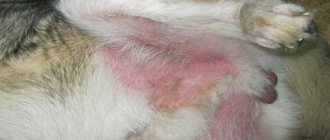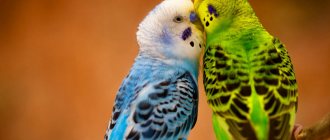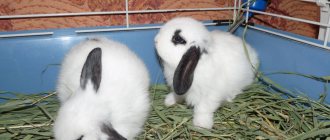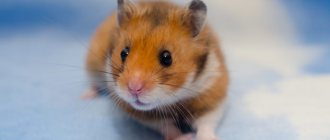Care and maintenance
The red-eared turtle, although not a dwarf turtle, is a fairly popular pet.
The size of an adult reptile reaches twenty, in rare cases, twenty-five centimeters. With proper maintenance, a turtle will live in a family for about thirty years, and there are cases when a reptile lives up to fifty, but this is under ideal conditions. In order for a pet to feel good and develop properly, it needs to create favorable living conditions. A turtle needs a spacious aquarium to live. The optimal volume is one hundred fifty to two hundred liters. And this despite the fact that in childhood the red-eared turtle is only about three centimeters in size. There is a natural pattern: the larger the space, the more fully the reptile develops and grows.
Despite the fact that the turtle is an aquatic reptile, it requires land. Therefore, in the aquarium it is necessary to provide a hill made of stone or other artificial objects that will act as land, where the turtle will go to rest and warm up. At any time of the year, an ultraviolet lamp should be constantly located near the aquarium; in the summer it can be replaced by fresh air and light sun, but not direct rays, they are dangerous for reptiles. Ultraviolet light is vital for the red turtle; without it, they often get sick and quickly die.
The water in the aquarium should always be clean and warm. When changing it, use only water that has been standing for two days. It is good if a pump filter is installed in the aquarium, which will help purify the water.
Let the land from the water to the island have a rough surface, on which it will be easy for reptiles to climb. The heat-loving red-eared turtle needs to bask in the sun. At home, this whim is quite easy to fulfill. You need to take an ordinary electric light bulb with a power of no more than 40 watts and install it at a distance of ten centimeters from the place where the turtle will rest on land.
Regarding the ultraviolet lamp. There are certain points that need to be taken into account. The fact is that its rays come in different lengths, so it is best to give preference to special lamps designed specifically for reptiles.
These lamps are necessary for disinfecting aquariums and animals. You can’t do without them in the cold season. Turn on the lamp three times a week for five minutes. The distance from it to the aquarium should be thirty centimeters.
Little red-eared turtles make excellent neighbors with aquarium fish, but as they grow older, they begin to hunt and eat them. Yes, don’t be surprised, red-eared reptiles belong to predators, which is why they are kept in a separate aquarium as adults. By the way, these small predators can bite a person’s finger, so there is no need to tease them and expose their phalanges to the animal’s mouth.
Turtle selection
Basically, they buy Central Asian (steppe) turtles, which are not very demanding in terms of care. They can grow up to 20cm in length and are characterized by the presence of a small, rounded shell of a yellow-brown hue in combination with brown spots.
To begin with, it shows its activity in the morning and evening hours, and during the day and at night it rests in some kind of shelter. Based on this, we can conclude that for such a turtle it is necessary to create similar conditions.
The Central Asian tortoise goes into a state of anabiosis (hibernation) twice a year, thereby escaping heat, cold and lack of food. This does not mean that she will do this at home, because she has enough food and the temperature is within optimal limits.
Varieties of dwarf turtles for home keeping
Pets always remain miniature. The average length does not exceed 13 cm. Types of domestic aquarium turtles:
- Musky. Remarkably adapts to keeping in domestic conditions, is resistant to numerous infections, reaches 10-11 cm.
- Bolotnaya. Originally from Europe, reaches 10 cm, sometimes lives up to 50 years. This non-exotic species lives in large numbers in European reservoirs. Sometimes it shows aggression; you need to hold the individuals by the top of their shell.
- Spotted - easily recognized by yellow spots throughout the body. Grows up to 9-10 cm, suitable habitat: 50% water, 50% sand, they need large stones and branches.
- Pondovaya - found in Japan, China, and other eastern countries. It is distinguished by square patterns on the shell, gets sick a lot, does not adapt well to our environment, reaches 11-12 cm.
- Closed species native to America and Africa reach 11-13 cm, depending on the subspecies.
- Flat - grows up to 79 cm, feels great in small aquariums, consumes vegetation, is undemanding in care. Some turtles are mistakenly mistaken for dwarf turtles and reach large sizes.
- The red-eared slider is a popular species among pet reptile enthusiasts. This species is distinguished by its endurance; it is recommended to buy them if a person gets a reptile for the first time; due to the inexperience of the owners, they often die. Pets spend a lot of time under water; the sand should always be illuminated with ultraviolet light.
Red-eared breeds are fast, strong, sometimes show aggression, often attack other reptiles and take food from them.
It is convenient to keep them in an enclosure for people who are allergic to animal fur. When buying pets for children, all responsibility rests with the parents. If you properly care for them, their lifespan is extended to 20-40 years.
Natural habitat conditions include:
- Fresh water.
- Space for heating.
- Plants for the nest.
- Warm.
- Sand or silt at the bottom.
Turtles love to lie on top of each other and bask in the sun.
Red-eared fish are difficult to confuse with other species. A stripe of color runs down the neck from the eyes. The top of the shell is smooth, covered with yellow, black and green stripes. The shell is brightly colored, has a greenish tint, and gradually darkens. Over the years, spots are eliminated, the stripes on the neck fade.
The length of newborn individuals is 2.5 cm, after a year they increase to 5-7 cm. Puberty in males occurs when they grow to 10 cm, and in females - at 12.5 cm. The average dimensions of an individual - 25-30 cm - vary depending on living conditions.
Size does not always accurately indicate age; in domestic conditions they increase more quickly than in nature due to overfeeding and almost ideal conditions.
This breed has well-developed senses, the color spectrum is clearly distinguishable even under water, and suitable places for laying are easily determined. At a distance of 40 m they can detect the movement of other individuals or predators. A keen sense of smell helps to search for food, and the sense of touch allows you to choose tastier foods. Red-eared animals have poor hearing and can only recognize vibrations or muffled sounds. The shell contains nerve fibers, so it is sensitive to touch. The animal hisses, snorts, and squeaks.
Caring for Miniature Turtles
Most of the time they sit in the water. Before purchasing a pet, an aquarium is equipped - it can catch a cold and should not walk around the premises. To maximize lifespan, you must follow the care instructions:
- The aquarium is 3-5 times larger than the size of the pet - it needs more free space.
- Half of the bottom area is filled with water.
- In order for the reptile to alternate living on land and in water, large stones and thick branches are placed at the bottom.
- The ultraviolet lamp helps supply the body with calcium.
- Sand is poured onto the bottom, but changing water in such conditions is difficult.
- Suitable air temperature is 28 degrees.
- Fresh water is poured once a week to prevent the spread of infection, and hands are washed.
- Artificial plants are laid out at the bottom, which pets gradually eat.
- Food container is not installed.
Aquarium volume – 100-150 l. A small terrarium is suitable for land breeds. A certain temperature of water and air is suitable for each species. It is necessary to clarify this information with the seller. Violation of the conditions of detention greatly affects the well-being of the turtle.
Not everyone gets large reptiles, since it is difficult to maintain their normal existence and choose the right soil. An aquarium filter helps purify the water.
https://youtube.com/watch?v=tysRhJxWpoQ
Classification:
- External.
- Internal.
The design of the external device is similar to a canister with a pump located outside the aquarium. The housing consists of a pair of compartments with filter material. The tubes are connected to the liquid in which the turtle lives.
The internal ones are not so large, they are equipped with pumps and diffusers, and they remove dirt perfectly. The liquid is filtered by a tube and cartridge, coals and other devices. The product is fixed in different positions.
Required components for an aquarium:
- Priming.
- Artificial pool.
- Backlight.
Reptiles living in hot Asian countries love temperatures of 30-40 degrees, the Libyan breed loves warmth very much. Ultraviolet radiation has a positive effect on the body and allows it to absorb vitamin D.
How is gender determined? Puberty begins at 1 year, you can determine whether it is a female or a male after the size of the reptile reaches 10 cm, after 2-3 years you can say for sure who it is. With good feeding, puberty occurs before the age of 1 year.
Girls are larger than boys, their tail is shorter, and the cloaca is closer to the spine. Males have long and curved claws and a concave plastron.
Sellers often keep pets in poor conditions; after purchase, it is recommended to take them to a veterinarian to check for wounds, diseases and other problems. When replenishing the terrarium, newcomers must be kept in quarantine for about 3 months. Adults and young animals are kept separately, as they can injure each other. Living together is suitable for reptiles that are similar in size and requirements.
Adaptation to a new place takes 2-3 days. During this period, there is mild lethargy or abnormal activity.
People hold them in their hands with caution; if they resist, they often drop them. Bites cause pain, sharp claws can scratch the skin, so they do not cause discomfort when touched
Feeding rules
At home, no person has the opportunity to choose food on their own; therefore, its variety must be provided by the pet owner.
There are several basic rules that will help you feed your pet correctly:
- size of food - depends on the size of the pet, pieces of food should be approximately half the size of the head, aquatic species also eat large pieces, tearing them with their claws;
- the amount of food should be calculated for a half-hour meal, and one meal should not exceed half a shell;
- The temperature of the food should only be at room temperature and in no case from the refrigerator; heat treatment of foods is also not allowed; food should only be consumed raw;
- feeding frequency: an adult pet is fed 2 or 3 times a week, pregnant females and young animals under 2 years old - every day (+ a lot of calcium in food), do not leave food for more than 2 hours in the terrarium;
- It is recommended to give food only in the form of a mixture of various foods; do not give the turtle only its favorite food, and if it refuses another, then let it fast for several days;
- It is not advisable to give vitamins and calcium separately; these elements must be included in the food; a calcium block can be placed in the terrarium, which the turtle will chew if there is a lack of calcium;
- The palatability and color of the food plays an important role, this species perfectly distinguishes between the colors of the spectrum and prefers red, orange and yellow as food, if you add products of these colors to the mixture, the food will look more appetizing;
- a feeding place, for land species a feeder is equipped, for aquatic species the food is located in the water or on the shore, you can also feed in a separate fish tank, in which maintaining cleanliness is very important.
Usually turtles themselves clean their faces of food debris. But some foods can dry out on the corners of the mouth, then when bathing they need to be washed off with your hands.
Where to keep a mini turtle
House option for a mini pet
If you are planning to get a mini turtle that will live in water, then for one individual you should take a large, 100-150 liter aquarium. But for a miniature land creature, a small terrarium is suitable. Be sure to find out the temperature conditions for keeping your pet in order to create the most comfortable environment for it, and clarify the specifics of its diet. Compliance with these conditions will guarantee that your turtle will live a long and happy life and will not get sick. About turtle diseases.
Video about mini turtles
Today we talked about the types of miniature turtles that are suitable for home keeping and how to care for these pets. We hope you find this information useful. We are waiting for photos of your miniature turtles. By the way, what type of turtle lives in your home?
We are waiting for your feedback and comments, join our VKontakte group!
Walking outside
It is possible and necessary to take land and semi-aquatic representatives out for walks. At the same time, it is not recommended to walk some species of aquatic turtles. Walking can begin when the temperature in the shade reaches 20°C.
There are several reasons why you need to walk your pet:
- more movement than in a terrarium;
- obtaining natural ultraviolet light;
- the opportunity to eat the necessary grass.
Caring for the turtle during a walk also takes place. The owners need to make sure that she does not run away and is not grabbed by dogs or crows. The reptile may also hide in the shade to cool down and avoid heatstroke. The minimum walking time should be about half an hour.
- Proper care of kittens: feeding, maintenance
- Bengal cats: maintenance, breeding, features
Benefits of keeping baby turtles
Many people dream of having some kind of exotic animal live in their home. It is worth noting that in some apartments you can find pythons, lizards, snakes, etc. Unfortunately, most apartments are not large enough to accommodate a crocodile, for example. Although rare, such an animal can be found.
As for the turtle, this is what is needed. Firstly, this is a completely harmless animal that will not harm anyone, including children, and secondly, a small turtle takes up very little living space. And feeding a small animal is always much easier. In addition, caring for such a pet can be entrusted to a teenager. He will not only become familiar with the living conditions of this animal and its habits, but will also learn to love nature in general, and not just pet turtles.
The most common breeds of aquarium turtles
Such pets need comfortable conditions, high-quality and regular care, and an equipped tank. However, even such needs do not scare off owners - many decide to have such reptiles. But how can you choose the most suitable pet among the abundance of breeds, because they differ in size, behavior, character? It is worth considering the most popular representatives.
Red-eared (yellow-bellied) turtle
In an aquarium, these animals, whose homeland is North America, can live for a quarter of a century. Reptiles are colored greenish, and behind each of the eyes there are stripes of a bright, scarlet hue. Males have a long, compacted tail, elongated claws on their forelimbs, and their dorsal shield is smaller than that of females. The plastorn is an abdominal shield, of a concave type, while in females it is straight.
The red-eared turtle is an aquatic species, so it needs a tank of water. Young individuals prefer animal food - they eat fish, shellfish, and insects. As they grow older, their gastronomic preferences change, and reptiles switch to a plant-based diet.
It is recommended to feed aquarium pets variedly, giving them foods containing plant and animal proteins. To keep the tank clean much longer, it is advisable to give your pet food outside of it. Naturally, the meal will require more time and attention from the owner.
For a comfortable life for an exotic pet, you need to purchase an aquarium with a volume of at least 150 liters. Only in a spacious tank will the red-bellied turtle feel good. A quarter of the container should be occupied by a sloping bank; it should be installed in such a way that the earthen embankment does not end up in the water.
Water should be prepared in advance: cleaned, settled, temperature 20°-22°C. It is replaced every week; filtering is not necessary, but acceptable. It is advisable to equip the tank with an additional source of ultraviolet rays and illumination.
In the summer, when the aquarium is constantly illuminated by sunlight, red-eared turtles begin to reproduce. It is recommended to place duckweed and filamentous algae in the tank.
Emys orbicularis (European swamp)
The reptile has a small carapace, the length of which is approximately 20 cm. But the limbs have large nail plates and webbed feet. Almost the entire body and shell are covered with small spots, lighter than the main color.
They choose reservoirs with fresh water and a bottom covered with a layer of silt as their habitat. They hunt mainly in the daytime, feeding on various small animals. Among domestic turtles, the marsh turtle is distinguished by its decent size - the weight of individuals reaches 2 kg.
The reptile has an elongated tail, which helps it regulate its trajectory while moving in the water. In adult turtles, the shell becomes dark - brownish, brownish or deep olive, with yellow specks on the main background. Eyes – yellow or orange.
These reptiles are capable of staying under water for a long time, being excellent swimmers. Almost any live food can be used as food - from larvae to small crustaceans and fish. You can give food yourself or place it on a special hanging feeder. Swamp turtles swallow food only while in the water. You cannot include minced meat in your pet's diet.
European turtles are kept in spacious 150-200-liter aquariums, in which equipment is installed like “artificial islands” that form a coastline. Medium and large stones are used as soil.
Water can be filtered. Suitable water temperature varies from 25° to 28°C, the depth should be no more than 20 cm. In addition, the tank must be equipped with additional devices:
- heating lamps that do not provide light;
- UV lamp;
- low-pressure mercury gas-discharge lighting device (fluorescent);
- thermometer;
- aquafilter;
- an aquarium heater with which you can regulate the water temperature.
If a pet is provided with proper care, its life expectancy can be about three decades. In addition to these popular aquarium inhabitants, there are several breeds of smaller turtles that are kept as pets.
Caring for a Pet Reptile
The shell is a means of protection that must be properly cared for. Most often it has a dome-shaped shape, and the ossification itself is associated with the internal skeleton. At home, caring for the entire body and shell is very important.
Washing and bathing a turtle
Experts recommend bathing turtles once a week, or even every two weeks. Also, once a day it is necessary to spray the entire body with warm water, while trying to keep the soil in the terrarium dry. If you have an aquatic species (radiant, red-footed), but there is no swimming bath placed in the terrarium, then this type of turtle will have to be bathed more often. Keeping young turtles (up to 2 years old) requires the use of warm baths up to 3 times a week.
Keeping young turtles requires the use of warm baths up to 3 times a week.
It is better to carry out the bathing process in a container with water, because with water pressure or a constant flow it is possible to cause serious injury due to temperature changes. Bathing water should be at a temperature of 30 to 35°C.
The water level should be 2/3 of the height of the turtle, while making sure that the nostrils do not submerge in the water. After swimming (about 30 minutes), remove it from the water and then dry it with a soft paper or terry towel. It is recommended to place the turtle in a warm terrarium and, under no circumstances, take it outside or into a draft.
Molting of a turtle
In small quantities, land turtle species shed their skin. It is recommended to add baking soda to the water when bathing in the amount of 1 teaspoon per 1 liter of water. You cannot regularly bathe your reptile in soda, so this bathing is repeated twice during the molting period.
At the same time, aquatic species shed less noticeably. But it’s worth paying attention if molting continues for a long time, and pinkish or reddish areas appear on the skin, then this is a manifestation of a fungal disease. Fungal diseases must be treated. And creams and ointments will make it easier to care for dry turtle skin.
Algae and shell
In the natural environment, the shell can become overgrown with algae, and the same thing happens at home. This process can be facilitated by water pollution, excessively bright light, and other reasons. If there is a small amount of algae, their presence on the shell is not dangerous.
When algae reaches a large scale, the turtle needs care and treatment. Strong plant growth can cause the shell to peel off, which in severe cases causes the reptile to lose its defenses.
White coating on the shell
White coating is hard deposits of salt that form on the shell due to hard tap water. Central Asian and other types of land turtles are less susceptible to such formations.
Central Asian and other species of land turtles are less susceptible to such formations.
The plaque itself is not harmful to the health of the reptile, but it is better to avoid large accumulations of it. To do this, it is possible to use soft water (for example, from a filter) or lubricate the shell with lemon juice to clean it.
Beak and claw trimming
In the natural environment, and if you can properly care for it, the reptile will grind off its claws and beak on its own. Land (Central Asian) and semi-aquatic individuals need to trim their beak and claws that are too long.
These plates can grow beyond measure for several reasons:
- eating only soft food;
- keeping on sand or sawdust;
- lack of calcium and vitamins in feed.
A haircut is only necessary when the overgrown parts interfere with eating and moving normally.
Aquatic turtles, as a rule, do not require cutting of their claws and beaks. Very long claws are used for tearing and separating food. And male red-eared turtles are proud of the secondary sign of puberty.
To avoid harm, you can also contact a veterinarian to cut off the overgrown parts.
What to feed a turtle
Choosing a diet for a red-eared slider is not at all difficult. Since she is a predator, she will eat raw meat, fish, even with bones, with great pleasure. The only thing the animal needs to limit is fatty fish. The turtle also eats bloodworms and granulated food with great pleasure. However, you should not feed the animal with only one type of food; the food must be varied and complete, otherwise the reptile will develop rickets and deformation of the shell occurs. This occurs due to a lack of vitamin D. Therefore, it is necessary to follow certain feeding rules. Young reptiles are fed mainly food of animal origin, gradually increasing plant nutrition. From birth to two years, the animal is fed once a day. After a day.
What to feed land animals. turtle
What to feed our pet? Pet store sellers sometimes talk complete nonsense, saying that the Central Asian turtle cannot live without milk and raw meat. These are two foods that should be strictly excluded from your tortoise's diet!
The Central Asian tortoise is not a predator; the only food its body can accept is food of plant origin! Remember this once and for all!
How to care for a turtle in summer? First, bring your turtle dandelion leaves and flowers, and treat him to different types of salad in winter. Secondly, in rare cases, give the turtle a carrot and an apple, let him eat it, but forget that 80% of the diet is greens, any proteins of animal origin can affect the improper development of the skeletal system in the turtle, which includes its shell .
Have you noticed that turtles that are fed animal food have problems with their shells? It grows disproportionately in them, in different directions.
The fact is that turtles, unfortunately, do not understand what food is suitable for them, so in nature many turtles die because they ate some poisonous flower. Due to their indiscriminate nature, turtles can eat everything that their owner offers them, thereby developing a “perverted” taste - the turtle begins to perceive everything that comes into contact as food - paper, pebbles, etc., that it sees in its terrarium.
Feed your pet responsibly!
By the way, in order to have enough vitamins and calcium in the diet, it is necessary to add supplementary food to the food - a mixture of Tetra ReptoLife and ReptoCal, at the rate of 1 gram per week per 1 kg of turtle weight. Mix the proportions of 2 parts ReptoCal to 1 part ReptoLife. If your turtle weighs 500 grams, it should eat 0.5 grams of this mixture per week.
Types of small turtles for home keeping
Small turtles are those that, even as adults, do not reach a length of more than 12 centimeters. If a turtle has a body length of more than 15 centimeters, it is already classified as a medium-sized pet, and it needs a special move. All other turtles (up to 15 centimeters) belong to the mini category. However, you must be aware that if you buy a small turtle, then in childhood it may only be a few centimeters long, while over time it will definitely grow a little. This is a natural process and you must be prepared for it - perhaps in a couple of months you will have to buy a larger aquarium to comfortably keep your aquatic pet.
Flathead or flat-bodied turtles
This is what flat turtles look like
The body length of an adult can reach 8-9 centimeters, and the weight can be 100-200 grams. A small aquarium will do to keep these little ones, and the fact that these turtles feed on succulent plants, which contain a lot of moisture, makes caring for them a simple task, even a child can do. This is one of the unpretentious types of mini turtles, which can be recommended even to novice turtle keepers. Read more about what turtles eat.
Locking turtles
This is what shuttered turtles look like
In nature, these creatures live in Africa, Mexico and America. There are 4 known subspecies of these turtles, but the Sonoran and yellow turtles are more popular. They reach sizes of up to 13 centimeters in adulthood. But striped and mud turtles grow a little smaller - up to 11 centimeters.
Musk turtles
This is what musk turtles look like
Excellent candidates for the role of a pet. As adults, they rarely grow longer than 15 centimeters. Moreover, 4 types of them are also known. Representatives of each species differ in their color and size. Sternotherus depressus is considered to be the smallest - the size of an adult does not exceed 11 centimeters.
Spotted turtles
This is what spotted turtles look like
These turtles cannot be classified as completely aquatic creatures, as they do not mind getting out and being on land for a while. So, they are half aquatic, half land creatures, and for them to live comfortably in your home, you will need to take care of an aquarium terrarium that could provide them with a habitat convenient for them, providing both a piece of land and an artificial pond. Fortunately, the size of an adult turtle is no more than 13 centimeters, so there is no need to equip a very large house for them.
Three-keeled Chinese turtles
This is what three-keeled Chinese turtles look like
On average, the body length of an adult does not exceed 13 centimeters. Attractive appearance, unpretentiousness in terms of maintenance requirements, calm character - all this turns these creatures into favorites of turtle keepers, and especially those who do not have much experience in keeping turtles.
Where to keep a mini turtle
For the normal existence and development of an aquatic miniature turtle, you will need a 100-150 liter aquarium. As for the land species, a small terrarium is enough. At the same time, you need to know about the minimum and maximum temperatures so that your pet feels comfortable. It’s also a good idea to know about his diet. You need to know that all pet turtles are representatives of hot countries that need suitable temperature and humidity. Only with this approach will your pet be always healthy and delight others with its activity.
If these conditions are violated, then you need to be prepared for very unpleasant surprises. You should know that it is better to prevent negative consequences than to get rid of them later. The first thing that can happen is that the turtle gets sick, and treating such a baby, especially on your own, is very difficult and you can’t do it without a specialist herpetologist. And this, after all, is not only a loss of precious time, but also a waste of money. At the same time, we should not forget about the psychological aspect.











